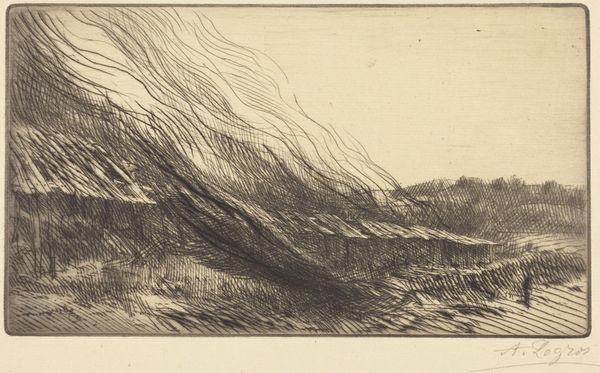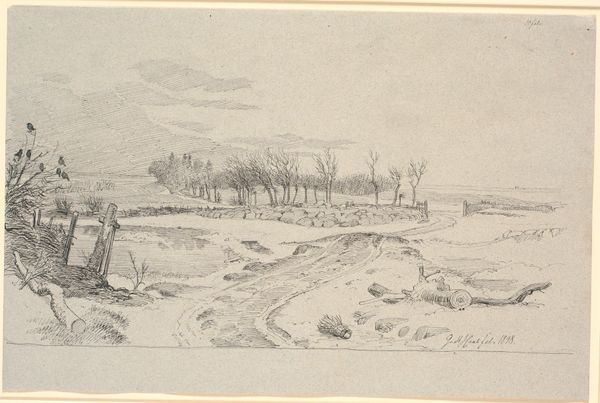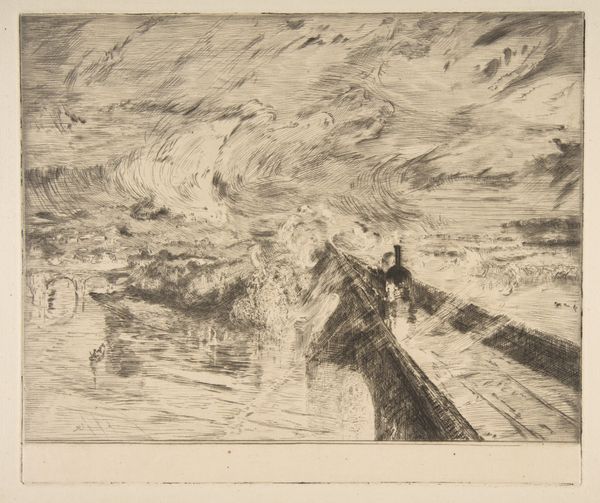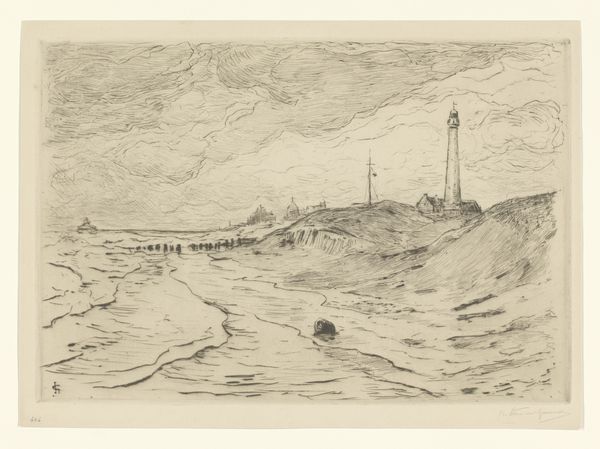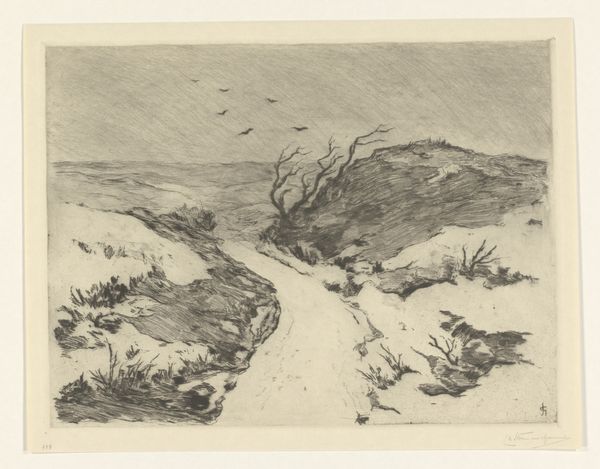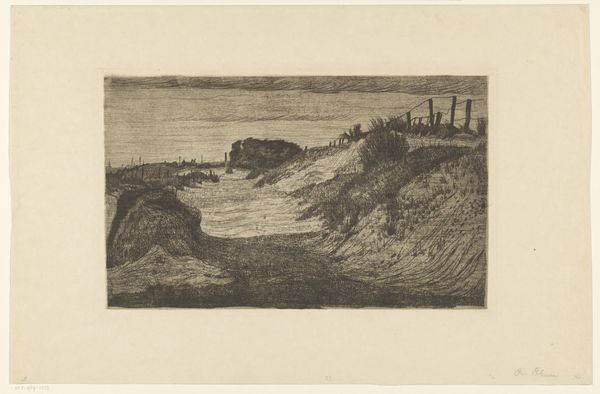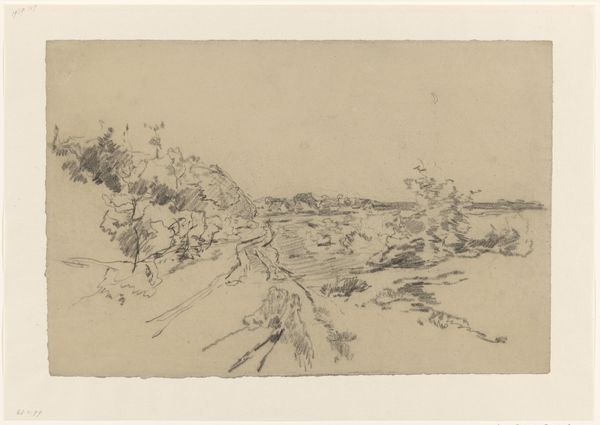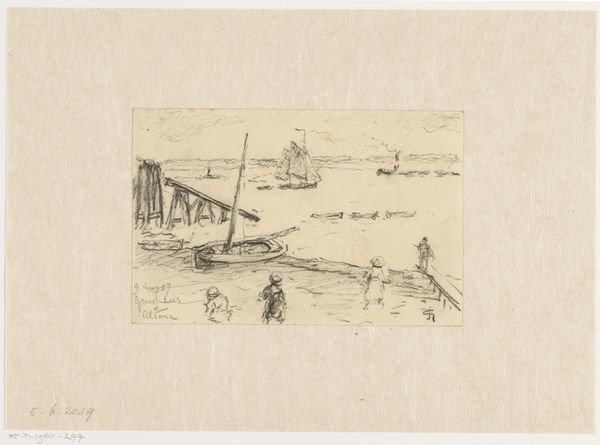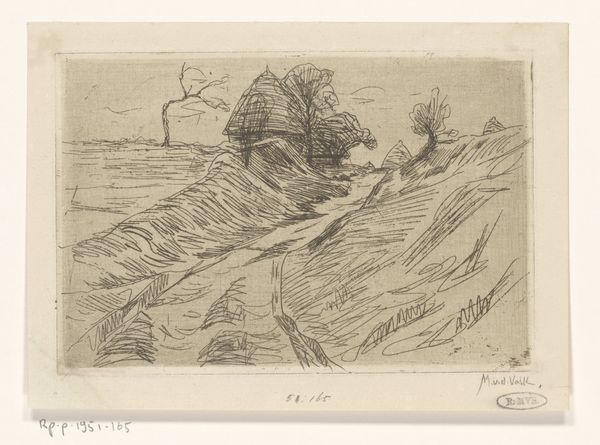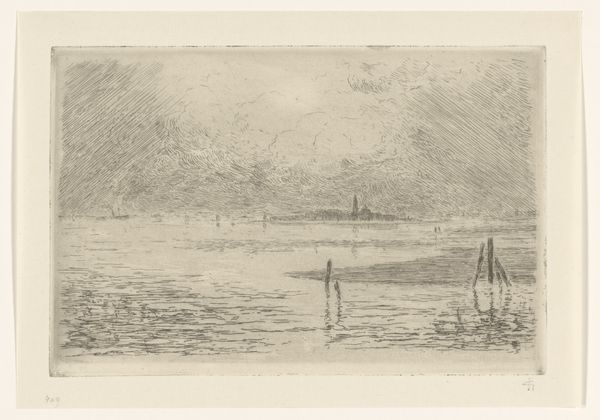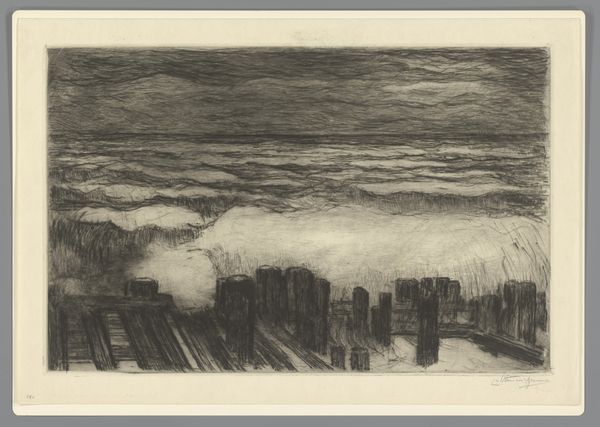
Wilde zee met een zeilschip bij een pier 1851 - 1924
0:00
0:00
drawing, print, etching, pen
#
drawing
# print
#
etching
#
landscape
#
pen
#
realism
#
sea
Dimensions: height 349 mm, width 535 mm
Copyright: Rijks Museum: Open Domain
Curator: Here we have "Wild Sea with a Sailing Ship near a Pier" by Carel Nicolaas Storm van 's-Gravesande, made sometime between 1851 and 1924. It's an etching printed from a pen and ink drawing. What are your initial impressions? Editor: Bleak, yet dynamic. The swirling lines evoke a turbulent, almost aggressive sea. The tonal range is quite limited, making the scene feel stark. Curator: Absolutely. Let’s consider the social and material conditions of printmaking in the late 19th century. Etchings like this one were relatively inexpensive to produce, making maritime scenes accessible to a wider audience. How might the rise of industrial shipping influenced such imagery? Editor: Good point. Looking at the composition, my attention is drawn to the interplay of light and shadow across the waves. See how the artist uses the white of the paper to suggest the crests of the waves catching the sunlight? It's an effective technique. Curator: Yes, and the very process of etching – the acid biting into the metal plate, the repetitive labor of pulling prints – speaks to the burgeoning industrial processes reshaping both artistic production and seafaring industries. We see the working-class connection with water-based labor manifested here. Editor: While I recognize the value of situating this work within its socio-economic context, I'm captivated by the formal tensions within the image itself. The solidity of the pier against the chaotic fluidity of the ocean—that stark contrast is fascinating. There are darker themes as well: a man against nature. Curator: And how might the pier itself symbolize something larger than a mere structure? I am fascinated with that very industrial structure. We are clearly looking at progress. Editor: It offers a visual anchor amidst the chaos. The pier provides stability, but the raging sea dwarfs it, rendering its strength fragile. Symbolically, it feels charged with an inherent tension that reveals deeper layers within society. Curator: Thinking of maritime labor, we might consider the etcher himself as a kind of worker, translating the wildness of the sea into a reproducible image for consumption. How do we then view the artist's role in representing that industry? Editor: The labor required of both etcher and seafarer invites thoughtful connections between art and life during that historical time. Curator: Ultimately, this seemingly simple seascape contains multitudes – an entry point into understanding art, labor, and representation in the age of sail. Editor: Yes, precisely. It makes me appreciate even more how much one can learn through formal investigation that links form to historical context and even theoretical investigation. Thank you for pointing all of that out.
Comments
No comments
Be the first to comment and join the conversation on the ultimate creative platform.

